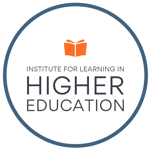Reflections on AI in Higher Education
The Potential of Personalised Learning, Intelligent Tutoring, and Advanced Analytics
Read on as Professor Claus Nygaard reflects on the use of AI in Higher Ed.
Introduction
1. Personalised Learning Experiences
2. Intelligent Tutoring Systems
3. AI-driven Analytics for Monitoring Student Engagement
The third use case I would like to discuss is the potential of AI-driven analytics to monitor and assess student engagement. As an educator, I have always grappled with how to maintain the attention and interest of students throughout their educational journey. The digital era has indeed made an abundance of data available, but deriving trends and insights from this data for student engagement can be overwhelming.
It is with AI-driven analytics tools that I see the promise of gathering meaningful data on student interactions, online behaviour, and overall engagement with learning materials. Armed with these insights, educators can identify areas for improvement, detect early signs of disengagement, and effectively tailor their teaching strategies.
